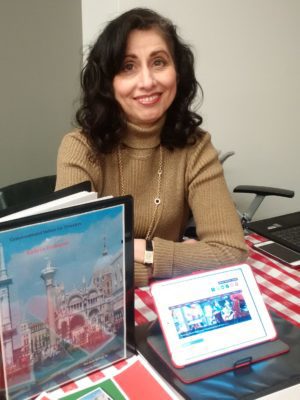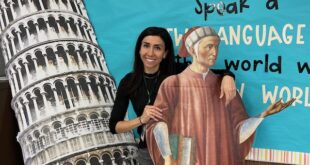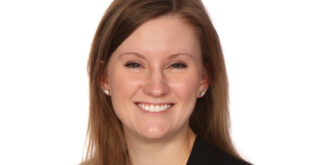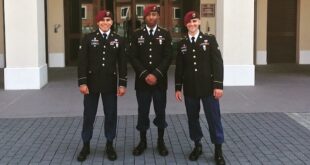Growing up in an Italian-American family, Kathryn Occhipinti experienced the Italian food, the emphasis on togetherness and the practicing of the Catholic faith. But she felt one piece of her heritage was missing: the language.
Her grandparents and parents would converse in Italian, making it even more of a mysterious to her. After completing her medical training, she spent years studying the language, writing books and teaching classes in conversational Italian. She gears her efforts toward adult learners with a desire to travel to Italy.
“Today, people are trying to understand where they came from, and the language was really key to me in understanding my family,” she says.
Her journey to that realization took years, starting in her childhood in Long Island, N.Y. Her family would often visit her grandparents in their Italian enclave in Brooklyn, and she would hear people in the neighborhood speaking the language. They also celebrated Italian street fairs.
“It was very exotic to me,” Occhipinti recalls. “It was a fun place for me as a child, and I loved going there.”
Years went by as she attended medical school in Boston and Manhattan, took a fellowship in California, landed her first job in radiology in Florida, and then got married and had a daughter.
When her little girl was 2, Occhipinti and her then-husband decided to move to Peoria to raise her as well as a son who was born a couple of years later. She had studied Italian throughout high school, but after joining the Italian American Society of Peoria, she started studying the language in earnest, mainly on her own through books. A teacher friend recruited her to teach Italian about 10 years ago, and she says she really learned the language by teaching it.
“I had been to Italy, but I didn’t know enough Italian to get around very well,” she said. “So I started gearing the classes to adults, who may want to visit their relatives in Italy.”
She wanted to teach people how to take planes, trains and taxis to get around in Italy, as well as navigate menus in different regions.
Unable to find books to impart what she wanted to teach, Occhipinti wrote her own, and had each vetted and approved by Italian teachers from whom she was taking lessons. They were native speakers.
She organized each chapter with dialogue, vocabulary and important phrases. She also included cultural notes, such as that restaurants in Italy include gratuities on the check.
“I tried to make the books chatty and fun,” she explains.
On Sundays, she taught the language to Italian American Society of Peoria members, and they practiced over coffee and cake.
“People would hear about it and call me and say, ‘I want to go to Italy next year to meet relatives, and I’d like to learn some Italian,’” she said. “So I learned I wasn’t the only one who grew up Italian but felt the language was missing.”
She balanced the learning, teaching and writing with her work in radiology, often writing part of a chapter during a night she was on call for her job.
“For me it’s a good balance, because I have two sides — I love science and medicine, but I also am creative, and this keeps up my creative side,” Occhipinti reflects.
After her daughter, now 20, graduated from high school in Peoria, she moved to Hinsdale and enrolled her son in high school there. She works out of Hinsdale Hospital for a radiology group.
She also leads an Italian-language meet-up group out of the Hinsdale library every third Monday evening. The beginners’ group meets from 7 to 8 p.m. and the intermediate group from 8 to 9 p.m.
Occhipinti also offers free Italian language learning, as well as her book, “Conversational Italian for Travelers,” and other materials at www.LearnTravelItalian.com.
 Fra Noi Embrace Your Inner Italian
Fra Noi Embrace Your Inner Italian







